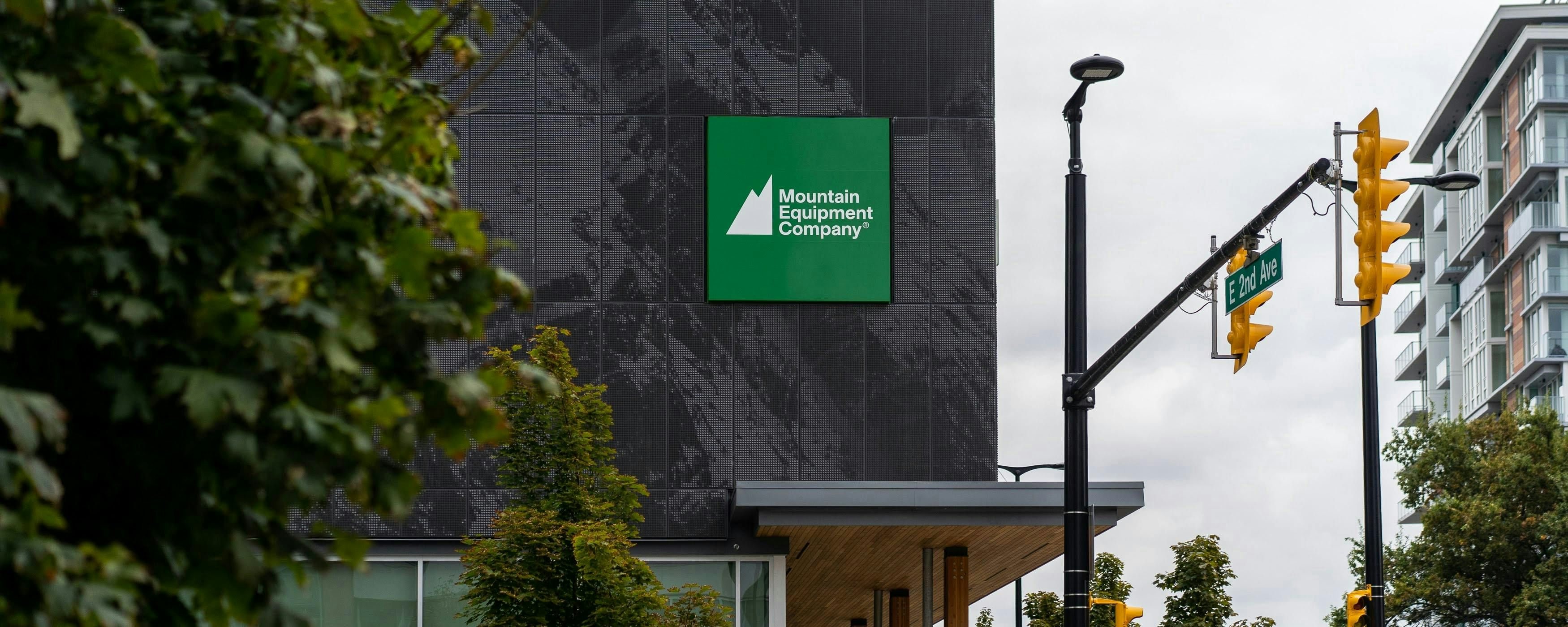From the roofs of our buildings to the behind-the-scenes heating and cooling systems, MEC aims to maximize efficiency and minimize environmental impacts. Our goal is to create structures that are healthy and inviting for you and MEC staff. Some of our stores are in refurbished spaces, like a former heritage hotel (Victoria). Others are built new, which allows us to incorporate sustainability into the design from the ground up.
MEC has been a retail leader in green buildings; we had the first and second retail stores in Canada – Winnipeg and Ottawa – to comply with a Natural Resources Canada C2000 Green Building Standard that acknowledges buildings that achieve a 50% reduction in energy consumption over conventional structures. Many of our buildings are also designed to various levels of LEED standards, including LEED Gold (Barrie, Burlington, Longueuil, North Vancouver and Vancouver) and LEED silver (Edmonton, western distribution centre).
We also know that the location of our buildings can have indirect effects on the environment. Our stores and head office are close to transit hubs, and some locations have electric vehicle charging stations. To promote sustainable commuting, our head office and stores offer safe bike parking and showers. We support local bike advocacy groups and events like Bike to Work Week to build a culture of riding.
Biggest impacts
The largest energy savings come from the things that may not seem the most exciting: lighting and heating and cooling systems. While not necessarily as interesting as neat features like straw-bale walls or reclaimed timber from the bottom of the river (in our Ottawa store), these are areas where we can make the most impact. These energy savings help drive down our scope 1 and 2 greenhouse gas emissions.
Energy-saving lighting features that we’re able to include depend on the individual buildings. Some ways we’ve reduced energy through lighting in stores are:
- LED or florescent tubes, which take less energy to produce and run than conventional bulbs
- Motion sensors to turn off lights in unoccupied areas
- Sawtooth-shaped roofs and high windows let in as much daylight as possible.
When it comes to heating and cooling, some energy-efficient features we’ve been able to incorporate in different stores include:
- Geo-exchange systems in concrete floor slabs to provide radiant heating and cooling.
- Ventilation that uses natural convection and prevailing winds to maintain temperature and air quality.
- Insulation that’s above the standard that’s called for in the Model National Energy Code.
- On-site energy generation, like a solar panels on the roof a few of our stores.
- Investing in renewable energy certificates in all locations (from wind, low-impact hydro and landfill gas).
Clever features
Next time you’re at a store, ask if there’s a self-guided green building tour to see what kind of thoughtful features are incorporated into the building. Some of them you might already be familiar with – like our bike parking or simple unfinished concrete floors – but others may be hidden from view.
Here are some of the highlights from MEC stores across the country:
- Rainwater collected from the roof and stored in an underground cistern that provides water for non-potable uses.
- Composting toilets that reduce wastewater and provide fertilizer for our rooftop garden.
- Landscaping that uses non-invasive, drought- and salt-tolerant species, and plants that encourage bird and insect populations.
- Reclaimed materials, such as steel beams or timber from log booms.
- Purposeful ponds (called bioswales) around stores for storm and rainwater management.

